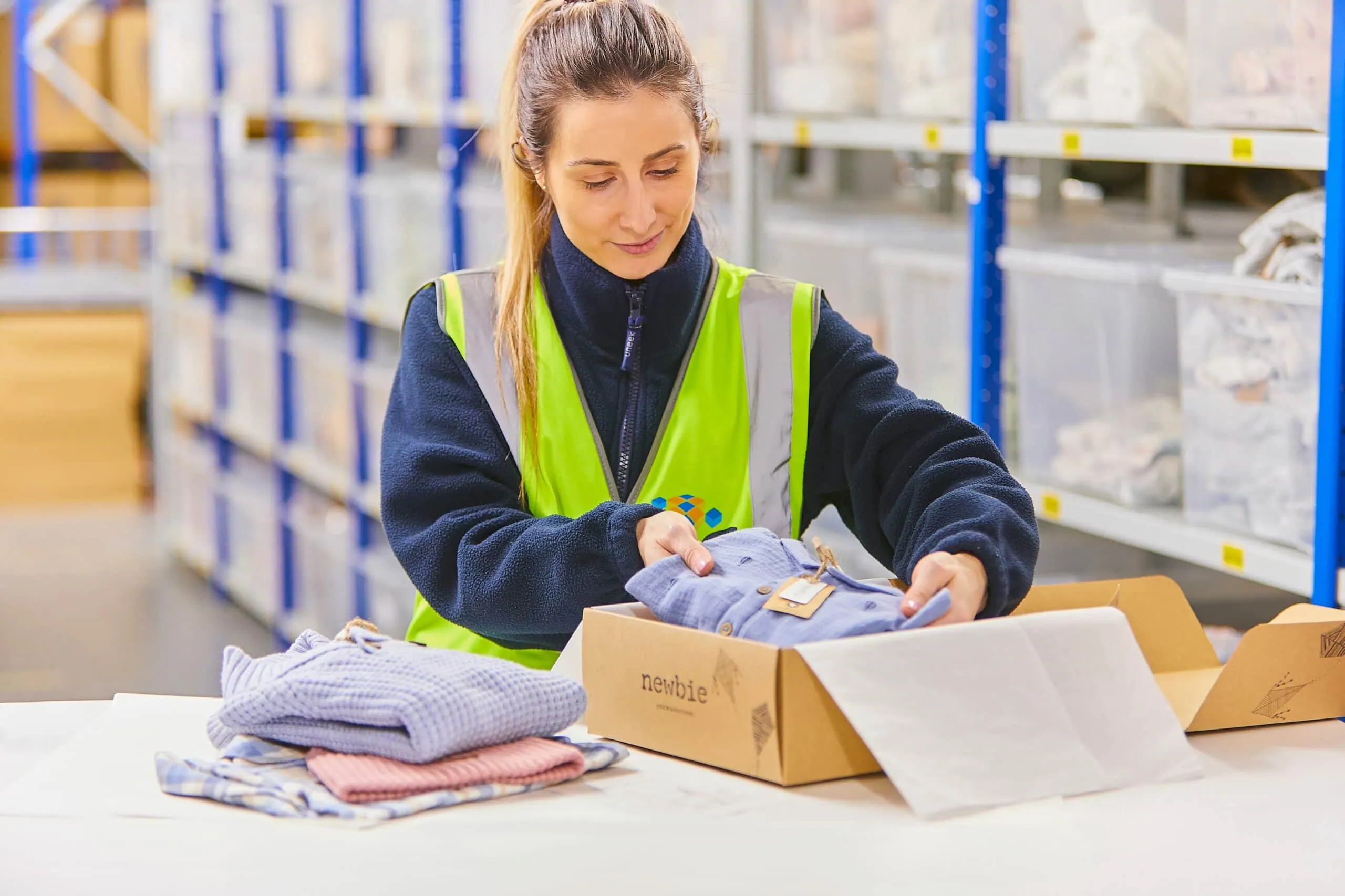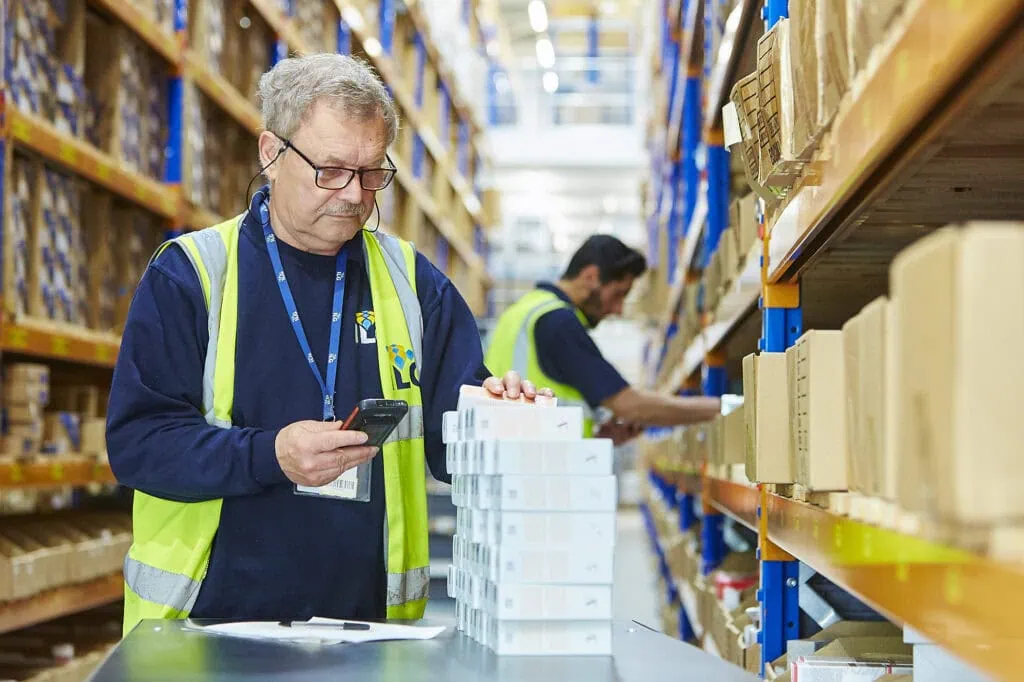
As concern over climate change continues to rise and sustainability is now more than a buzzword, consumers across the world becoming more concerned and conscious regarding their purchasing habits – are voting with their wallets.
‘Ethical consumerism’ is the practice of eco-friendly shopping with the goal of making a positive economic, environmental, and social impact. It’s about buying with intention – and it’s reshaping success in e-commerce by prioritizing values over convenience, transparency over hype and purpose over profit.
With 80% of U.S. consumers concerned about the environmental impact of their purchases, addressing the environmental impact of e-commerce is no longer considered niche. From sustainable packaging and carbon-neutral shipping to more mindful purchasing habits, this cultural shift is pushing brands to rethink how they operate. For online retailers, especially, the message is loud and clear: adapt to meet the expectations of conscious consumers – or risk being left behind.
Jump to:
- The Rise of Ethical Consumerism
- The Growth of Sustainable E-Commerce
- Innovations in Sustainable E-Commerce
- Challenges and Barriers
- The Future of E-Commerce is Sustainable
- Embracing Sustainable Solutions
The Rise of Ethical Consumerism
Today’s shoppers are savvier, more informed and more intentional about where they spend. These so-called ‘ethical consumers’ are thinking hard about the environmental and social impact of their purchases, choosing to buy from brands that demonstrate a clear commitment to sustainability and corporate responsibility.
What Defines an Ethical Consumer?
At its core, ethical consumerism is about aligning purchasing behavior with values such as:
- Environmental protection – choosing products that minimize harm to the planet
- Fair labor practices – supporting brands that treat workers ethically and pay fair wages
- Supply chain transparency – knowing where and how products are made
- Reduction of waste – favoring reusable, recyclable, or minimal packaging
- Animal welfare – avoiding products tested on animals or sourced unethically
These values are influencing not only what people buy, but who they buy from.
Regional and Generational Trends
Ethical shopping is growing globally, but adoption is particularly strong among Gen Z and Millennials. Nearly 50% of Gen Z consumers have stopped purchasing from a brand that doesn’t align with their values – with 62% reporting that environmental sustainability plays a role in their decision-making.
Meanwhile, European consumers lead the way in holding brands accountable for their environmental impact, while North American buyers are rapidly catching up, particularly in urban areas and among younger audiences.
Loyalty Has a New Meaning
Traditional brand loyalty is being replaced with “values-based loyalty”. Consumers are willing to switch brands for eco-friendly products and businesses that demonstrate genuine social impact. Nearly two-thirds of U.S. adults even say they’re willing to pay more for sustainable products – a shift today’s e-commerce retailers can’t ignore. It means values need to be embedded, not just marketed.
The Growth of Sustainable E-Commerce
With convenience comes a cost and every click-to-buy transaction contributes to a growing environmental footprint – from rising packaging waste, carbon-heavy supply chains, inefficient last-mile delivery and a surge in reverse logistics.
The Environmental Impact of E-Commerce
In 2022, the global e-commerce industry used 3.88 billion pounds of plastic packaging – an increase of 14.6% from the previous year – with over 20% consumed just within the U.S. This figure is expected to rise to 6.85 billion pounds (3.12 billion kilograms) by 2027.
This level of waste generation is unsustainable and is prompting a growing number of consumers, investors and policymakers to call for change.
Consumer Demand is Driving the Shift
Searches for “eco-friendly e-commerce” and “sustainable shopping” have risen sharply over the last five years. Shoppers are actively looking for brands that go beyond greenwashing and back up their sustainability claims with real action. For retailers, meeting that demand is more than just ‘good ethics’ – it makes good business sense, attracting loyal, high-value customers who care about the planet as much as the product.
Innovations in Sustainable E-Commerce
Sustainability doesn’t mean sacrificing efficiency or profitability. In fact, some of the most successful e-commerce brands are using innovation to reduce their environmental footprint while optimizing performance.
1. AI and Data-Led Efficiency
E-Commerce brands are now benefiting from the use of AI tools to make operations more efficient and sustainable. Smarter demand forecasting reduces overproduction and inventory waste, while route optimization cuts fuel use and delivery emissions by identifying the most efficient paths. Together, these tools support leaner operations and a lower environmental footprint across the supply chain.
2. Sustainable Packaging Solutions
Research shows that 69% of U.S. consumers are more likely to repurchase from brands using eco-friendly packaging, while 21% of UK buyers would be willing to pay more to go plastic-free.
The good news? Brands are listening and turning to sustainable packaging alternatives that reduce waste and align with consumer expectations, such as:
- Compostable mailers and plant-based films made from renewable materials
- Recycled cardboard and minimal-use materials, reducing the need for virgin paper
- Circular packaging models that cut down on single-use packaging and incentivize returns
3. Reverse Logistics
Returns are a major source of waste in e-commerce, with billions of dollars’ worth of products sent back each year, many of which are never resold. Now, thanks to innovative reverse logistics systems, returns can be streamlined, while reducing landfill use. Brands are finding practical ways to cut environmental impact and recover value from returned goods – embracing refurbished resale models, where returned items are repaired, re-boxed and resold at a discount.
4. Green Energy & Carbon Neutral Shipping
From installing solar panels on warehouses, switching to electric delivery fleets and purchasing renewable electricity, many retailers are making serious investments to reduce their environmental footprint. Some brands now offer carbon-neutral delivery options at checkout or integrate sustainability into last-mile delivery choices, giving customers the chance to opt for slower, more eco-friendly shipping.
5. Smarter Waste Management
Sustainable e-commerce doesn’t stop once the product is delivered. Smarter waste management is about closing the loop – rethinking how materials are used, recovered and reintegrated. Efficient recycling programs and local partnerships for reusing and repurposing materials are emerging as key parts of a green e-commerce strategy, demonstrating a brand’s commitment to the full lifecycle of their products and packaging.
Challenges and Barriers
While the business case for sustainability is strong, the road to transformation isn’t without obstacles.
The Cost of Sustainable Packaging
Packaging waste has become a global issue, prompting retailers to switch to eco-friendly materials like biodegradable plastics. These decompose naturally, helping reduce landfill waste and ocean pollution. While sustainable packaging often comes with higher upfront costs, especially for smaller retailers, it can boost customer loyalty, improve long-term efficiency and significantly cut environmental impact.
Speed vs. Sustainability
Today’s consumers want everything – fast, cheap, green. But ultra-fast delivery often comes with a high environmental cost. Brands need to find smart ways to educate consumers on slower, more sustainable options, such as eco conscious delivery options at checkout, such as “green” delivery slots and consolidated shipping. Some retailers even incentivize slower shipping through discounts, loyalty points or charitable donations.
Building Consumer Trust
As more brands jump on the “green” bandwagon, skepticism among consumers is rising. Wary of vague promises, misleading labels and greenwashing, it’s no surprise they gravitate toward companies with data-led, action-backed sustainability claims. Transparency, third-party certifications and clear metrics are essential to earning credibility and consumer trust.
Regulatory Pressure
Governments and regulators are also stepping in with stricter environmental regulations forcing brands to demonstrate compliance with sustainability standards. These include Extended Producer Responsibility (EPR) laws which require companies to take responsibility for the entire lifecycle of their packaging, including funding its collection, recycling or disposal. Brands selling across multiple markets will need to adjust quickly to stay compliant.
The Future of E-Commerce is Sustainable
Ethical consumers aren’t going away. In fact, their influence is growing and reshaping the entire e-commerce ecosystem. In the next 5-10 years, we can expect:
- Mandatory environmental reporting to become standard
- Circular economy models (repair, reuse, resale) to gain ground
- Localized supply chains to reduce transport emissions
- Increased brand accountability across sourcing, labor and emissions
- Partnerships with sustainable third-party logistics providers to ensure ethical last-mile delivery
For brands ready to evolve, this shift not only presents an opportunity to reduce harm, but to stand out from the competition and grow.
Embracing Sustainable Solutions
At ILG, we help e-commerce retailers reduce their environmental impact without compromising performance. From sustainable packaging and intelligent warehousing to carbon-offset shipping and reverse logistics, our solutions are designed to help you meet the needs of today’s ethical consumers.
We’re proud of our long-standing commitment to sustainability and our ability to help global brands scale their operations while prioritizing people and planet.
Ready to make your e-commerce operations more sustainable?
Get in touch with ILG to discover how we can support your journey toward a more ethical, efficient, and future-focused e-commerce model in the UK and EU.
Contact Us
Written by Helen Nichols
Performs a dual role managing ILG’s estate of fulfilment centres in the UK and heading up our Sustainability Team. Helen is one of ILG’s longest-serving colleagues, having joined in 2002 and taken on a range of roles, from Customer Service and Administration to HR and Health & Safety. She is passionate about driving sustainability initiatives across ILG’s 8 UK facilities and achieving our ‘Zero-By-30’ target to be a carbon-zero company by 2030.
More insights >
Top Social Commerce Tips to Boost Peak Sales
Discover the social commerce strategies that drive Peak Season sales. Read our practical tips for growing, founder-led brands.
Understanding MOQ and its Impact on Your Supply Chain Strategy
Understanding MOQ is critical for your business, and this guide will tell you all you need to know.

